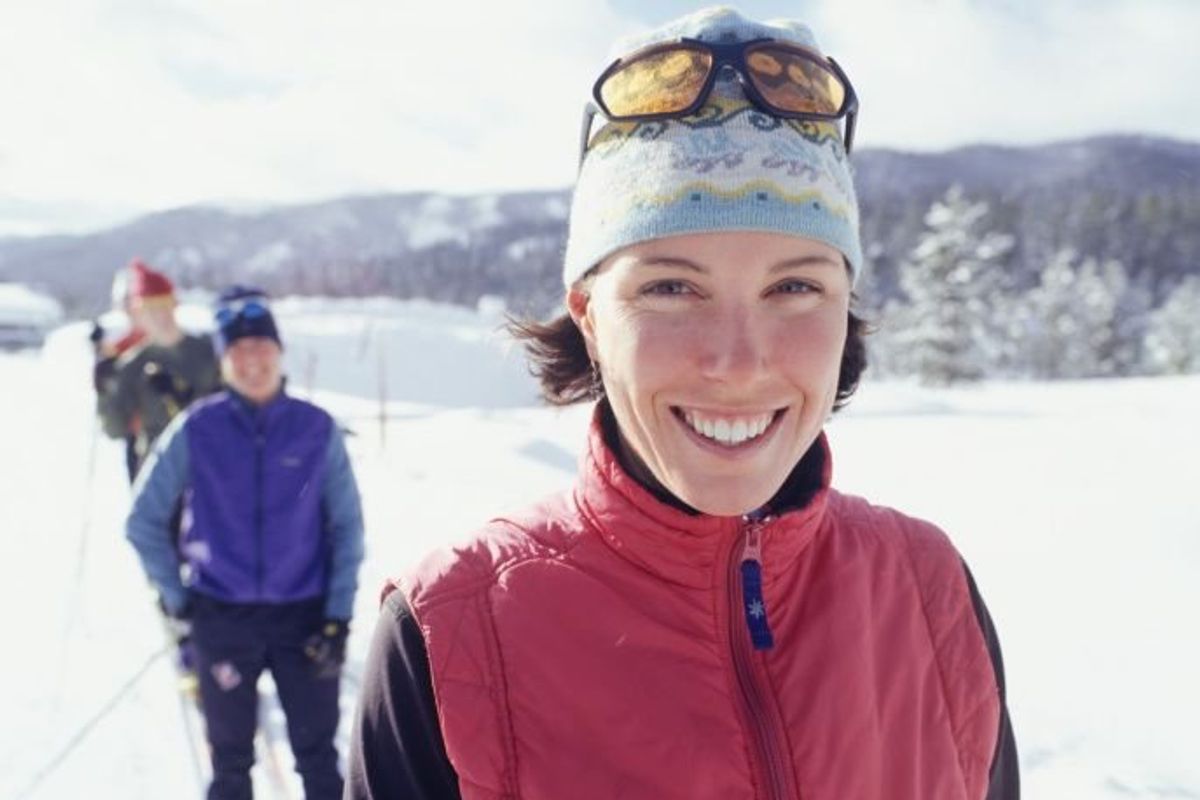Whether it's hopping on a sled, riding the ski lift or lacing up those old ice skates, breathing in that crisp air can make you feel alive. But with this excitement comes the need to remind yourself and your family about important precautions to avoid injury and stay warm.
No matter what your age, exposure to cold temperatures and taking part in winter sports can be dangerous if you're not prepared. Each year hundreds of thousands of Americans seek medical care for injuries resulting from popular winter sports.
Common Injuries
Most cold weather sport injuries result from falls. Other causes include collisions with others, whether it be on the mountain or the ice skating rink, incidents involving ski lifts or a general tendency to overexert oneself. The most common types of injuries involve the musculoskeletal system—our bones, muscles and joints, along with tendons, ligaments and cartilage—and include:
- Sprains and strains—A sprain is a stretch and/or tear of a ligament, and a strain is an injury to either a muscle or a tendon. Rest, ice, compression and elevation usually help minimize the damage.
- Dislocations—These are joint injuries that force the ends of two connected bones to separate so that one or both are out of position.
- Fractures—Broken bones in the wrist, ankle, arm and leg are common.
Head injuries are also common, which is why many leading medical organizations recommend wearing protective helmets when you're on the slopes or in the ice rink.
If you or someone you are with is injured, seek medical attention to determine if treatment and follow-up care is needed.
Preventing Injury and Staying Warm
To reduce your risk of injury, remember to participate within your abilities and don't overexert yourself. These can be high-speed sports, so slow down and don't try too hard to impress others. Here are some tips to help prevent winter sports injuries:
- Never go skiing, sledding, ice skating or snowboarding alone.
- Exercise in the months leading up to winter activities to keep in shape and condition muscles.
- Take the time to stretch and warm up your muscles before heading out; cold muscles, tendons and ligaments are more prone to injury.
- Know and abide by the rules of the sport.
- Wear appropriate protective gear, including goggles, helmets, gloves and padding.
- Use good quality equipment that fits and adjusts well.
- Take a lesson (or several) from a qualified instructor, especially in sports like skiing and snowboarding. Beginners should avoid jumping maneuvers.
- When falling, try to fall on your side or buttocks. Roll over naturally, turning your head in the direction of the roll.
- Pay attention to storm warnings and reports of severe drops in temperature to ensure safety.
- Familiarize yourself with the whereabouts of fences, trees, rocks, open water and patches of ice.
- Stay on marked trails and avoid potential avalanche areas, such as steep hillsides with little vegetation.
- Don't take part in sports if you are in pain or are exhausted.
Beware of frostbite and hypothermia, which can result from prolonged exposure to the cold or wearing cold and wet clothing.
Hypothermia occurs gradually when your body's internal heat production can't keep up with the heat loss. Symptoms may include:
- Cold hands, feet and face
- Shivering
- Listlessness
- Drowsiness
- Mental confusion
- Shallow breathing
- Stiff muscles
- Loss of consciousness
Frostbite occurs when the skin or tissue just below the skin freezes. Skin can appear white, blue or pale and may tingle or feel numb.
Make sure to dress in several layers of light, loose and water- and wind-proof clothing. Layering the right clothes helps your body accommodate to constantly changing temperatures and protects you from the wind. Polypropylene, polyesters and wool are good options, because they keep moisture away from your skin. Use footwear that keeps your feet dry and warm, and wear a hat to prevent the loss of heat from your head.
Other Helpful Hints
- Be sure to check for hanging drawstrings or scarves that can catch on sleds, ski lifts and other equipment.
- Remember the sunscreen––you still need it.
- Take plenty of breaks, which will also help you stay warm and dry.
- Drink plenty of uncaffeinated, non-alcoholic fluids to stay hydrated.
Ready to hit the slopes? Check out these exercises to help you prepare.







